Ecommerce, electric vehicles, cryptocurrencies, epharmacy and several other sectors have been badly impacted due to the absence of comprehensive policies
Flagship programmes such as Startup India and Digital India have met with limited success due to poor implementation and lack of critical vision
The drone segment has seen policy notification, but the infrastructure needed for implementation is missing
Vocal, tech-savvy and a weaver of dreams, Prime Minister Narendra Modi’s popularity has only increased over the years. In his second term that began in May 2019, his party won 21 more seats than the 2014 general election tally. His unique pull is not too difficult to understand, though. For more than six years, most of the welfare and development schemes (or forward-thinking projects like an inclusive digital payments ecosystem or an electric vehicle infrastructure, for that matter) seem to have been attributed to PM Modi and his government.
Be it the Kisan Samman Nidhi for the welfare of nine crore farmers, affordable housing for all, direct subsidy transfer to the bank accounts of the underprivileged, financial assistance for micro-businesses under the Mudra Yojana or never-before initiatives such as Clean India, Digital India and Ayushman Bharat, the programmes have evoked enough vishwas (trust) and helped him buck the anti-incumbency sentiment across the country.
The startup community has not been ignored, either. Since 2014, the Modi government has announced a series of new policies and policy reforms, including tax holidays, angel tax abrogation, startup-specific funds, easy market listing and several other schemes, thus promoting the ruling Bharatiya Janata Party’s election manifesto of ‘minimum government, maximum governance’.
But all may not be well on the ground. As the government-constituted inter-ministerial board monitors and decides each startup’s eligibility for various benefits, it often reminds us of the previous red-tape days. Add to those arbitrary regulations (the FDI curb in digital media from 100% to 26% is a case in point) and the numerous languishing policy drafts, and these are bound to raise a few questions: Why drafts do not get implemented within a reasonable time frame? Or what has happened to those hurriedly churned-out announcements and schemes made over the past six years and a half?
Let us not go too far back in time. Think of a critical statement made by the government in 2019. While presenting the Interim Budget in February, then finance minister Piyush Goyal said,
“The government will make 1 lakh villages into digital villages over the next five years.”
People were excited, and anticipation ran high as Bharat was about to catch up with Tier 1 India. But what could have been a part of the nationwide Digital India Mission, turned out to be an election gimmick of sorts. In its response to the RTI filed by Inc42, the Ministry of Electronics and Information Technology (MeitY) said in November 2019 there was no such plan in the form of a proposal or in execution.
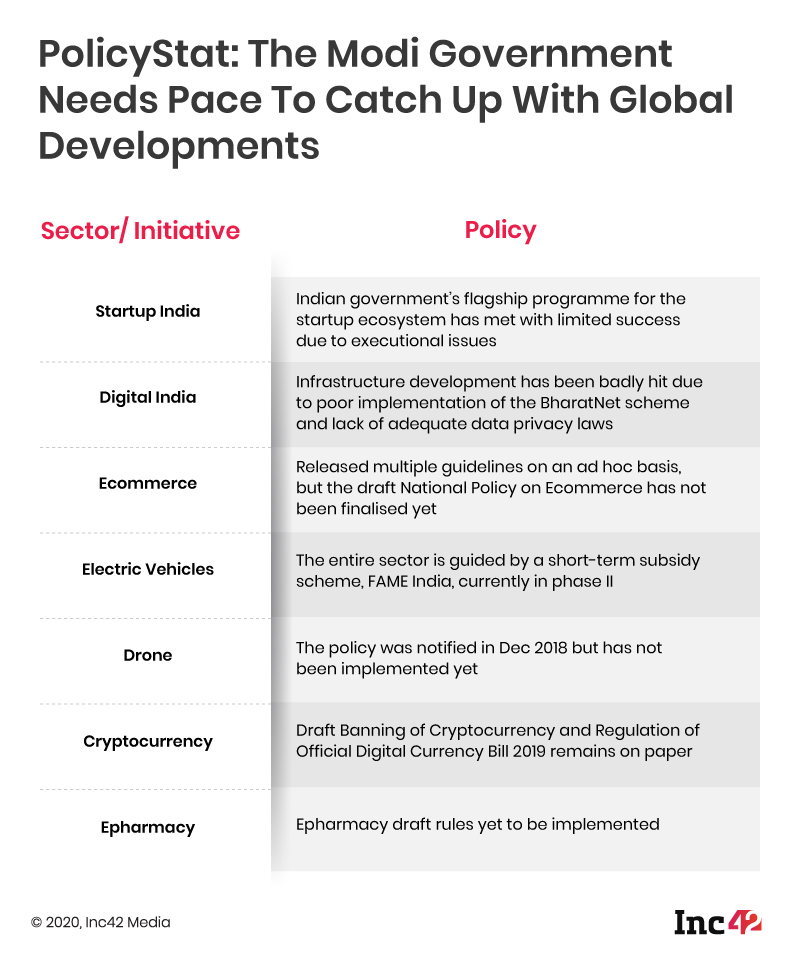
It was not an exception. We have come across several projects and policies in the works across umbrella programmes (Startup India, Digital India) and fast-growing industry segments (ecommerce, EV, drone and more). In each case, the promises made by the government exist only on paper or have never seen the light of day. Here is an overview of which initiatives and sectors have struggled most due to the government’s lackadaisical attitude towards policy implementation.
Startup India Meets With Executional Issues
After his Red Fort announcement in 2015, the prime minister launched the Startup India Scheme, the country’s most ambitious startup policy. Until now, more than 41K Indian startups have been recognised by the government that has helped build a startup ecosystem through various inter-ministerial initiatives. As part of the scheme, the government also announced a fund of funds (FoF) with a corpus of INR 10,000 Cr, and the entire amount was planned to be disbursed by March 31, 2025. 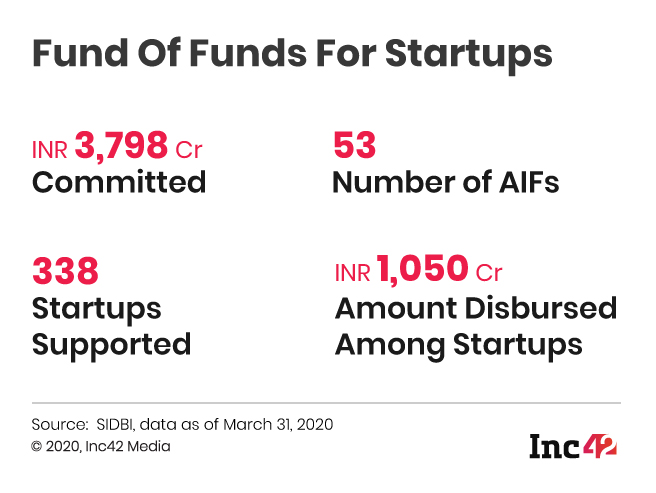 As of March 31, 2020, the government committed INR 3,798 Cr and the amount disbursed stood at around 1,050 Cr, roughly 10% of the entire FoF.
As of March 31, 2020, the government committed INR 3,798 Cr and the amount disbursed stood at around 1,050 Cr, roughly 10% of the entire FoF.
“The Interministerial Board (IMB), set up by the Department for Promotion of Industry and Internal Trade (DPIIT), is a roadblock of sorts and the major reason behind the slow execution,” said Mohandas Pai during a post budget meeting with the Finance minister Nirmala Sitharaman.
IMB’s approval is also required to claim income tax benefits under Section 80-IAC. According to reports, around 5K startups applied for IT exemptions between March 1, 2016 and March 31, 2019. However, only 94 startups got the IMB’s nod for tax exemption during the period.
Digital India Lacks Critical Vision
PM Modi’s flagship programme Digital India was implemented in phases between 2014 and 2018. The government has been only too vocal about the project’s success, claiming that the number of e-services went up from 2,463 in 2014 to 3,858 in May 2020 while daily average electronic transactions increased from 66 Lakh in 2014 to 16.3 Cr in 2020. Besides, the UIDAI issued 125.7 crore Aadhaar cards while 4,216 crore authentications were facilitated till May 2020. However, internet startups are wary of poor infrastructure and the lack of vision at the governance level.
One critical issue was the lack of commitment towards personal data protection. Initially, the Digital India campaign had not mentioned anything regarding digital privacy. Only after the Supreme Court’s order that stated privacy to be “our fundamental right granted under Article 21 of the Constitution,” the government formed a committee under Justice BN Srikrishna for drafting a Bill to ensure one’s digital privacy.
But the Bill that was tabled in Parliament was starkly different from what the Srikrishna Committee had submitted. In an earlier conversation with Inc42, Justice Srikrishna spoke of five major points that displaced the very purpose of the draft Bill. “What we had suggested was that the government should access an individual’s data only in extraordinary circumstances, which must be specified by Parliament. They have now changed it to the extent where the government can access the data at any time. That is very worrisome,” he said.
Then again, the BharatNet project, another remake of the National Optical Fibre Network (NOFN) initiative initially rolled out by the Manmohan Singh government in 2011, has badly failed. The project, to be implemented in three phases, is an essential part of Digital India. It was supposed to connect all the gram panchayats by December 2016, but even during phase II, merely 7.45% of the target has been achieved. While the government had already revised its deadline for completion of BhararNet by August, 2021, PM Modi in his last independence day speech ( 15th August, 2020) once again moved the goalpost by promising to connect all villages with optical fibre in the next 1,000 days.
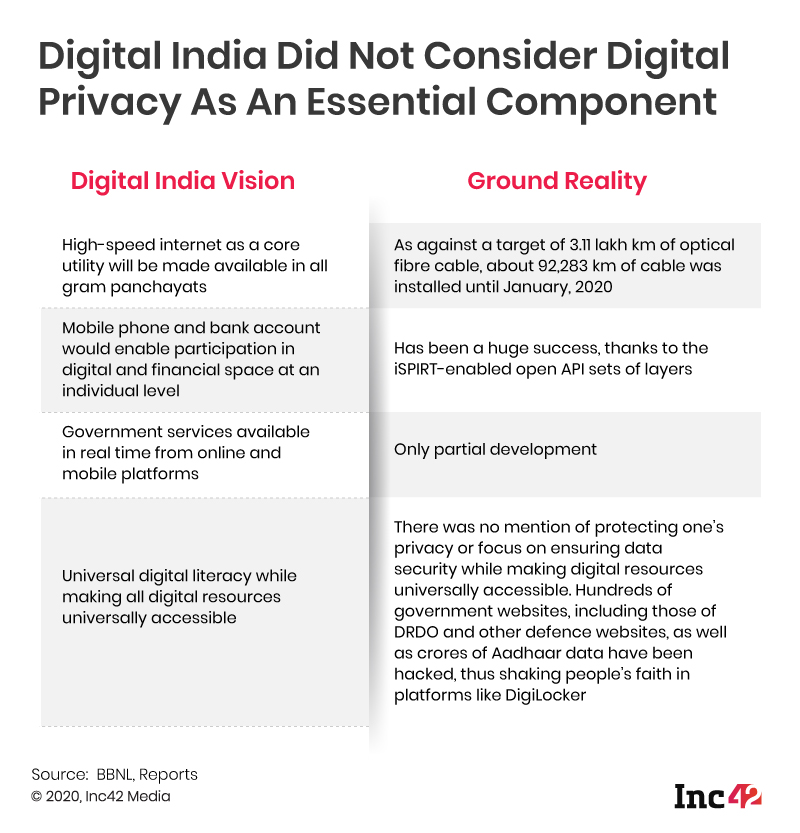
Ecommerce: A Policy In The Works
With India’s total internet user base expected to increase from 636 Mn in 2019 to 829 Mn by 2021, and its internet economy from $125 Bn as of April 2017 to $250 Bn by 2020, the country is considered to be one of the fastest-growing ecommerce markets in the world and could be the second-largest by 2034.
This needed a calibrated industry policy to support the ecosystem. PM Modi did fulfil the immediate demands by bringing 100% FDI in the marketplace model in 2016, adding ecommerce exports to the export subsidy regime as part of the Foreign Trade Policy 2015-2020.
Ecommerce, however, faced several challenges, including data theft, cross-border consumer rights, intellectual property rights (IPR), taxation and disruptive future techs such as drone deliveries and more. The vendors or sellers also needed dedicated rights to protect them from the diktats of marketplaces, which often forced them to give deep discounts. .
While addressing some of these issues via various circulars, the DPIIT (previously known as DIPP), set up a working group as well as a task force for drafting a national policy on ecomerce that could deal with the key issues. The draft framework was first released in July 2018, followed by the Draft National Policy on Ecommerce in February 2019. But the latter has drawn flak from industry stakeholders for being vague and overarching as policy overlap with other departments is likely to happen.
Since then, the government has been struggling to notify the same and is yet to clarify issues like data ownership, intermediary liability and source code sharing. Restrictions on cross-border data flow do not advance its goals either although IoT devices gathering user data have been exempted from the scope. Overall, it is not clear how the government will ensure fair competition and a level playing field for all players, big and small. As of now, the ecommerce industry in India is largely a two-player market and often seen as unfavourable for small marketplaces which lack the deep pockets of Amazon and Flipkart.
The epharmacy segment brings no cheer, either, to most of the investors and founders. Citing the absence of a comprehensive policy, several high courts across the country had earlier banned the online sale of medicine. The government came up with the epharmacy draft rules in 2018. But much like ecommerce, it is yet to form a pan-India regulation or bring transparency to the sector despite its focus on easy access to affordable and quality healthcare.
EV policy: Can A Subsidy Scheme Replace Policy Requirements?
Back in 2018, the Modi government also promised to introduce a stable EV policy encompassing all aspects of electric vehicles. It was seen as a replacement for the National Electric Mobility Mission Plan (NEMMP), and the NITI Aayog was tasked to speak to various ministries and stakeholders to propose a draft.
According to an independent study by Delhi-based think tank Council on Energy, Environment and Water’s Centre for Energy Finance (CEEW-CEF), India needs at least $180 Bn to hit the 2030 EV target.
Subsequently, the NITI Aayog came up with a policy framework, but a national policy on EVs never materialised. Later on, government officials said that with FAME India in place, the country does not need a policy like NEMMP, again introduced by the Manmohan Singh government in 2013.
Several EV startups and investors differed, though, as they spoke to Inc42. FAME India, essentially a subsidy scheme adopted on an ad-hoc basis, is more consumer-centric and does not provide any stability or direction to the industry. As a result, big automakers and investors have been extremely cautious about funding the segment.
“The charging infrastructure needs huge investments, and policy clarity would have attracted that,” Anand Anndurai, the founder of Bengaluru-based bike-rental platform VOGO, told Inc42 on a previous occasion. As part of its sustainable mobility programme, the startup has planned to add around 60,000 electric two-wheelers by 2023.
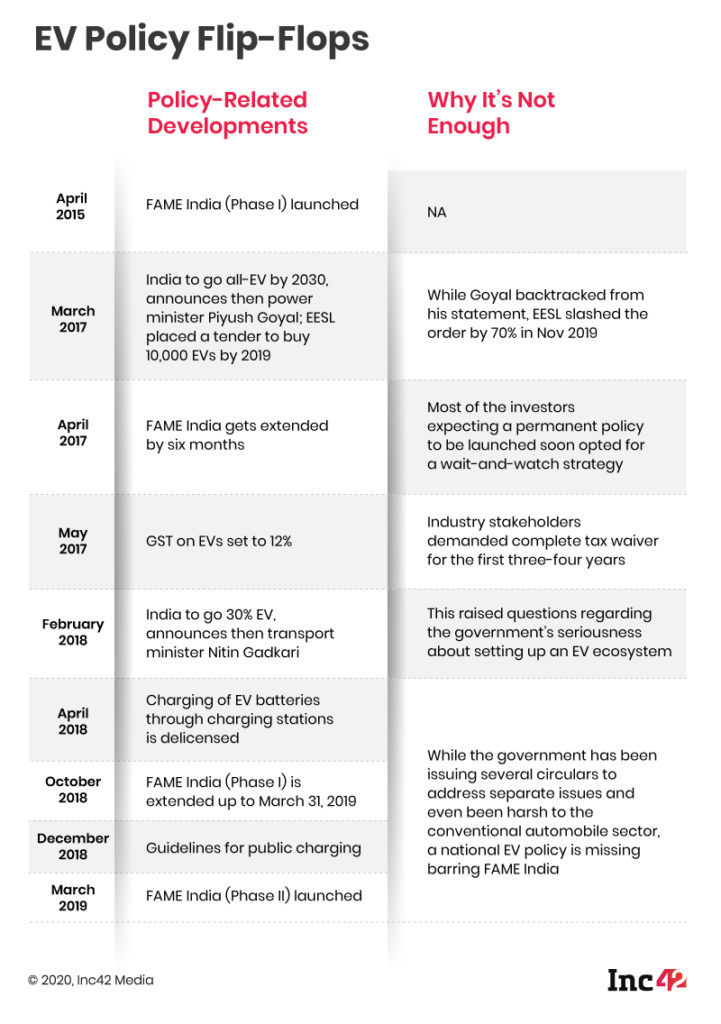
“Appropriate policy measures are needed to lower the overall lifetime ownership costs of EVs and make them an attractive alternative to conventional vehicles for all consumers”. — Economic Survey 2018-2019
Drone Policy: No Take-Off Scheduled
Unlike ecommerce and electric vehicles, which have been adversely impacted due to the absence of national policies, the Modi government has managed to take a few giant leaps in this segment. To start with, the policy paved the way for civic drones, which were prohibited earlier.
Notified on December 1, 2018, the Drone Regulations 1.0 policy was supposed to create a single-window solution for all drone-related purposes, right from registration to licensing. But the reality is drastically different. “We still need more than half a dozen authorities’ approval for flying a drone, and most importantly, the ‘Digital Sky’ is still in a beta phase with no NPNT (no permission, no take-off) in function,” says a cofounder of the Bengaluru-based drone startup who was also a special invitee to the government-constituted task force on drone policy roadmap.
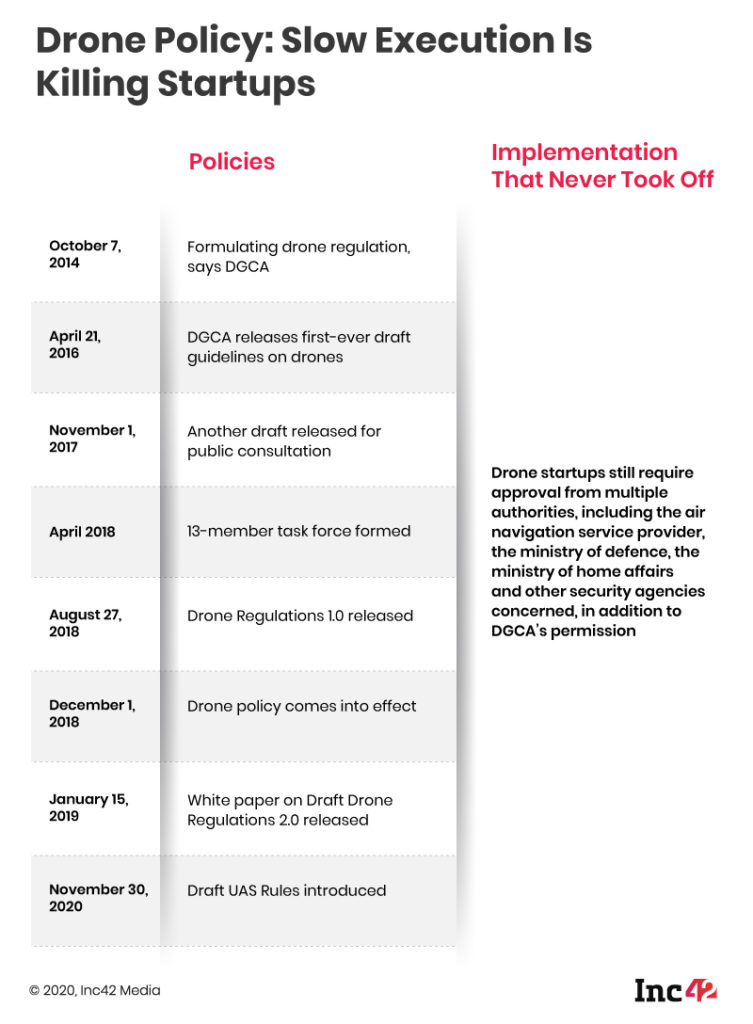
Apart from a few pandemic-related policy amendments regarding drone applications, most drone startups have been forced to put their operations on hold as they wait for a full-fledged ‘Digital Sky’ take-off.
What Has Gone Wrong With Cryptocurrencies
Unlike previous governments which did not witness transformational tech evolutions, the Modi government is in the thick of futuristic tech developments which it cannot afford to ignore. And cryptocurrency is one of them.
India has banned cryptocurrencies as legal tender, but these have been traded here as assets. However, crypto regulations are in limbo in a bid to prevent money-laundering and terror-financing. With little understanding of the matter, the two IMCs formed by the finance ministry recommended a complete ban on cryptocurrencies. However, the RBI’s attempt to ban banks from extending services to crypto entities has been quashed by the Supreme Court of India. As a result, crypto startups and dozens of crypto-related scams are popping up across the country. The government needs to regulate the former and prevent the latter, but once again, it has failed to come up with a timely policy on cryptocurrencies.

Covid-19 Has Delayed Things, But Action Is Needed Now
Going by these report cards, some kind of dysfunctional enmeshment seems to be emerging. But one should not ignore the other side of the coin. Riding on the wave of technological evolution and large-scale internet penetration, the government has come up with the United Payment Interface (UPI), an inclusive and overarching digital payment system, and the JAM Trinity (an abbreviation for Jan Dhan Yojana, Aadhar and mobile number), which have resulted in the efficient distribution of subsidies among India’s poor. Apart from evolving into a fintech mecca, the country has also witnessed a transformational shift in edtech, SaaS, telehealth, D2C commerce and a few other sectors.
But these positive outcomes are at odds with much of the ground reality. In truth, the government has been struggling to bring in the necessary policy reforms across the sectors in tune with PM Modi’s 2014 and 2019 election manifestos. Struggling to cope with the pandemic slowdown, Indian startups now want the promises to be fulfilled within the given time frame. But even after a year and a half in its second term, the government is yet to ensure timely execution and policy preparedness.
Take, for instance, the much-hyped INR 20,000 Cr Seed Startup Fund, announced in BJP’s 2019 election manifesto. Media reports suggest that the DPIIT is yet to approach the government with a blueprint of the promised scheme. Many blame it on the Covid-19 slowdown, but the pandemic alone cannot be a cover for the policy paralysis we have seen on the ground for the past six years or so. Now that we expect a jab of normalcy with the vaccines coming up, simply announcing a series of ambitious reforms will not suffice. The Modi government will have to walk the talk and do it fast.




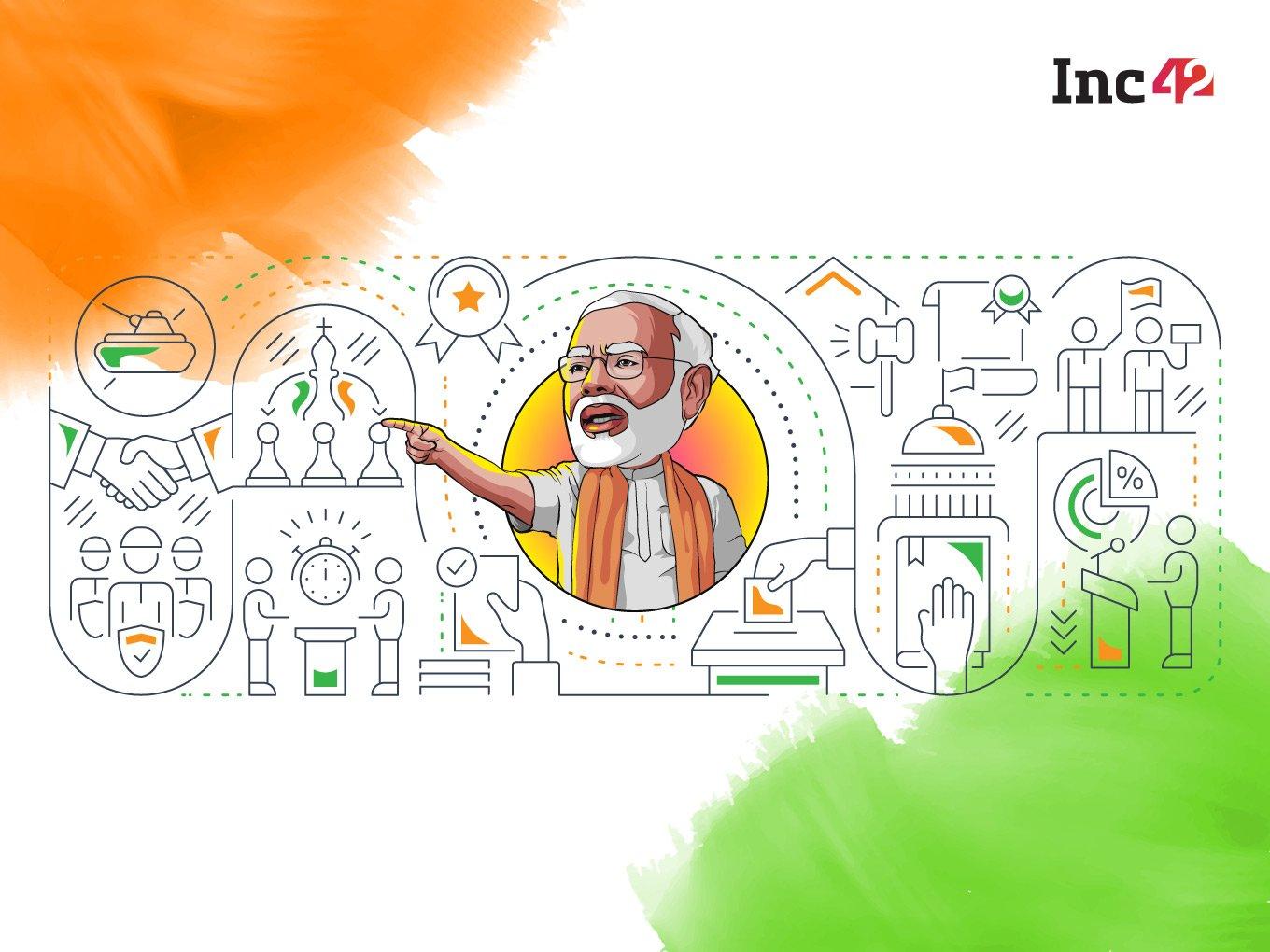



























 Ad-lite browsing experience
Ad-lite browsing experience